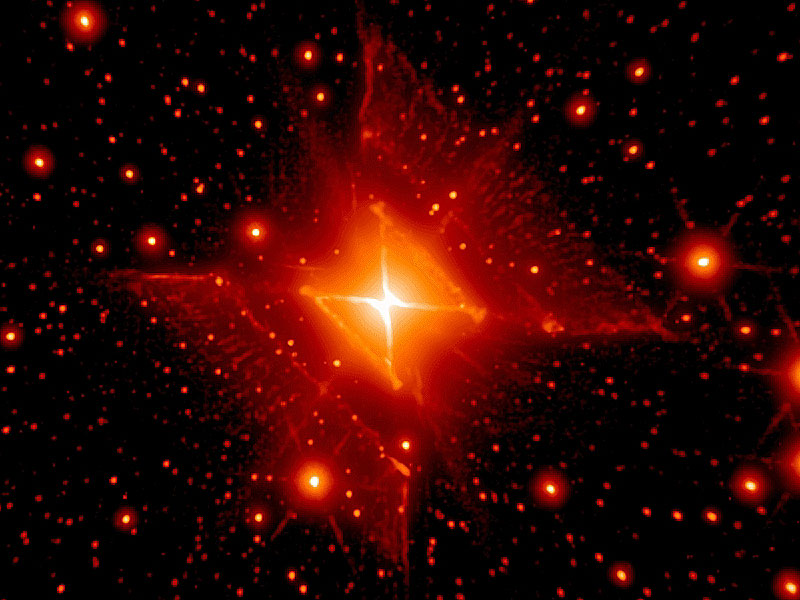
|
Credit & Copyright: Peter Tuthill
(Sydney U.)
Explanation:
What could cause a nebula to appear square?
No one is quite sure.
The hot star system known as
MWC 922, however, appears to be imbedded in a nebula with just such a shape.
The above image combines
infrared exposures from the
Hale Telescope on
Mt. Palomar in
California, and the
Keck-2 Telescope on
Mauna Kea in
Hawaii.
A leading progenitor hypothesis for the
square nebula is that the central star or stars
somehow expelled cones of gas during a late
developmental stage.
For MWC 922,
these cones happen to incorporate nearly
right angles
and be visible from the sides.
Supporting evidence for the
cone
hypothesis includes radial spokes in the image that might run along the cone walls.
Researchers speculate that the cones viewed from
another angle would appear similar to the gigantic rings of
supernova 1987A,
possibly indicating that a star in MWC 922 might one day itself explode in a similar
supernova.
|
January February March April May June July August September October November December |
| |||||||||||||||||||||||||||||||||||||||||||||||||||||||
NASA Web Site Statements, Warnings, and Disclaimers
NASA Official: Jay Norris. Specific rights apply.
A service of: LHEA at NASA / GSFC
& Michigan Tech. U.
Based on Astronomy Picture
Of the Day
Publications with keywords: nebula
Publications with words: nebula
See also:
